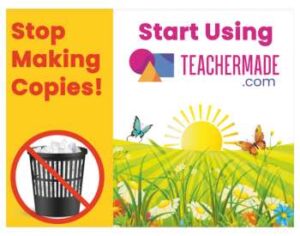The ways in which we conduct research and organize research have changed significantly over the last couple of decades. When many of us were in middle school and high school our research options were limited to books and periodicals available through our local libraries. Our organization of our research was done mostly in notebooks or perhaps in a desktop document. Today’s students have more resources available to them than ever before. They also have more tools than ever for keeping track of the resources they find through research. Here are some of the tools that can help students organize and cite their research sources.
Google Documents users have a research tool at their disposal whenever they open a document. Simply open the “tools” menu in Google Docs and select “research.” Once that selection is made a Google search box opens in the right margin of the screen. Resources selected from that search pane will be accompanied by a link placed in the footnotes of the document. The formatting of the citations often leaves something to be desired, but at least it gets students in the habit of keeping track of resources.
One of the most useful Add-ons for Google Documents is the EasyBib Bibliography Creator. The EasyBib Bibliography Creator makes it easy to properly cite resources and format a bibliography in APA, MLA, or Chicago style. The Add-on allows students to enter book titles, authors’ names, websites, webpages, and periodical titles. The Add-on will then create a citation that is added to a page at the end of students’ documents. Click here for directions for the process of using this add-on.
Cite This For Me is a free service designed to help students keep track of the resources that they use in their research work. Cite This For Me offers a free Chrome extension that lets students cite a webpage with just one click. The free extension will format citations in APA, MLA, Harvard, or Chicago style. Students can also use the extension to highlight and save portions of the webpages that they are citing. All Cite This For Me citations are saved in students’ free Cite This For Me accounts. In their account dashboards students can edit citations as well as manually enter citations of books, journals, and other references.
RefMe is currently my favorite tool for creating bibliographies outside of the Google Docs environment. RefMe offers browser extensions, a free Android, and a free iPad app for saving resources and generating bibliographies from your collection of resources. Watch my video embedded below to learn more about how to use RefMe in your web browser.
refDot is a Google Chrome extension that could be very helpful for keeping track of and formatting references for use in bibliographies. Whenever you’re viewing a website, an online book, an online journal, or a news article just click the refDot icon in your browser to open a window into which you enter all of information you need for a bibliography. For example if you were viewing a blog post on Free Technology for Teachers that you wanted to reference in a bibliography, click on refDot and the pop-up box will prompt you to enter the date of access, URL, title, and year.
Before you email me with a criticism of one of these tools:
As with all automatic citation tools, you will need to remind your students to double check that the citations created are properly formatted. Aside from that little quirk, these can be good tools for students to use to keep track of the webpages that they use while conducting research online. And from a realist perspective, I’m more concerned with getting students to cite their work in a standard format than I am about them knowing the nuances of MLA 7 vs MLA 8. I’d never diminish a K-12 student’s grade for a small mistake in citation formatting and most of my friends and colleagues wouldn’t either.











